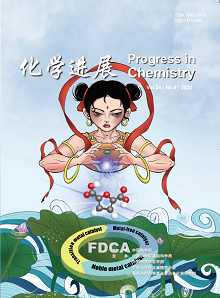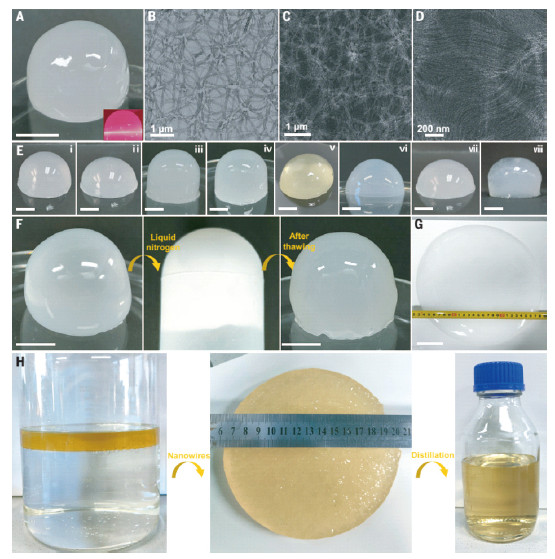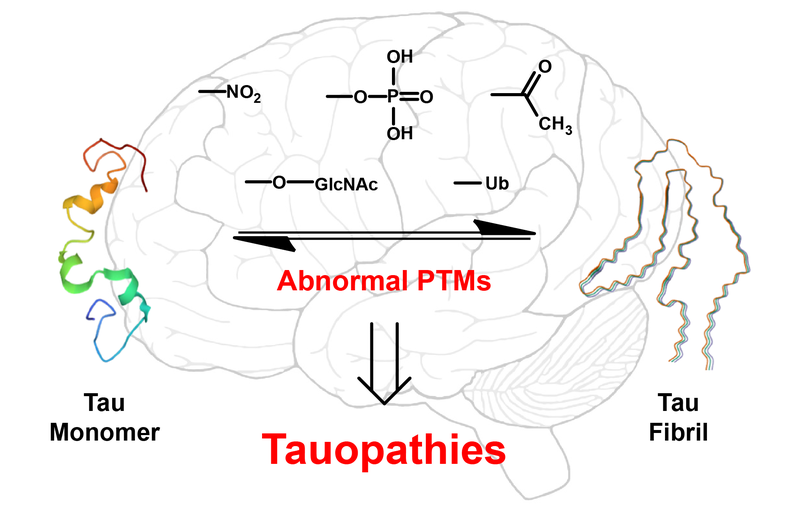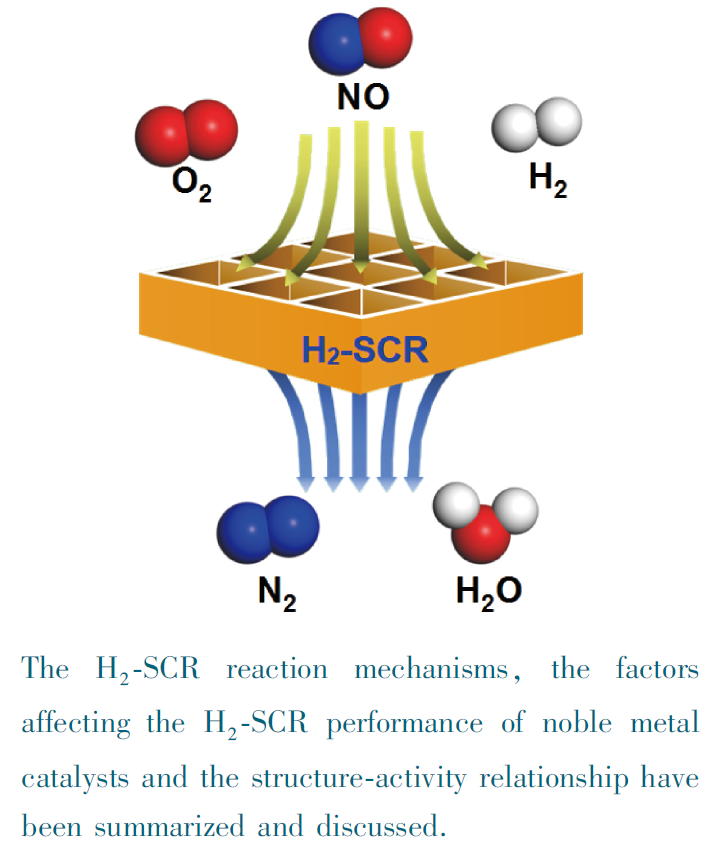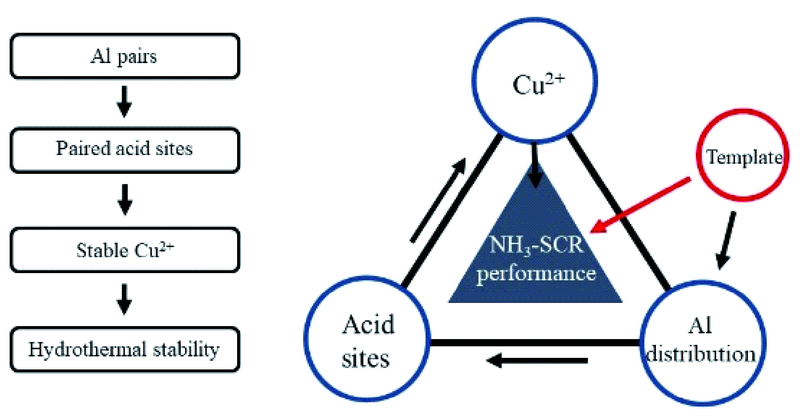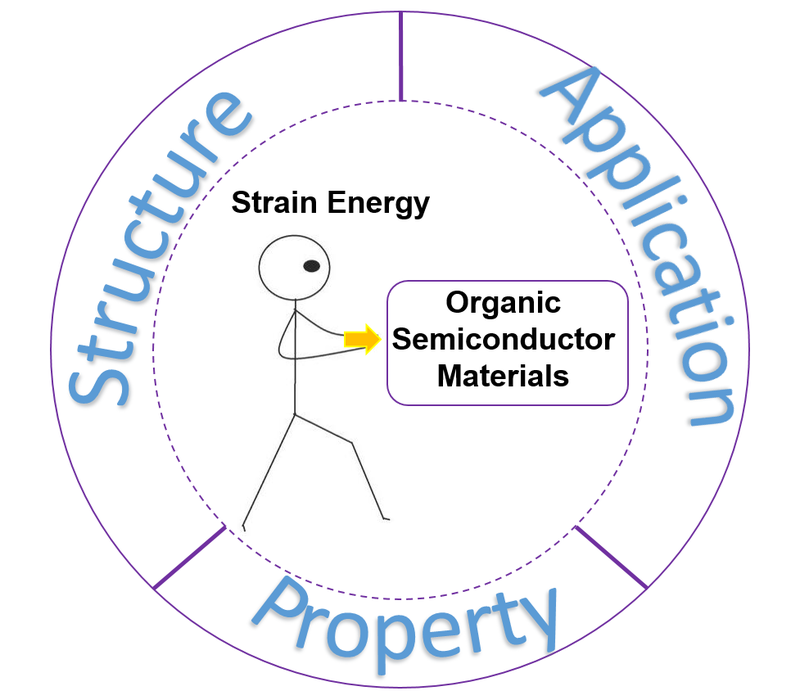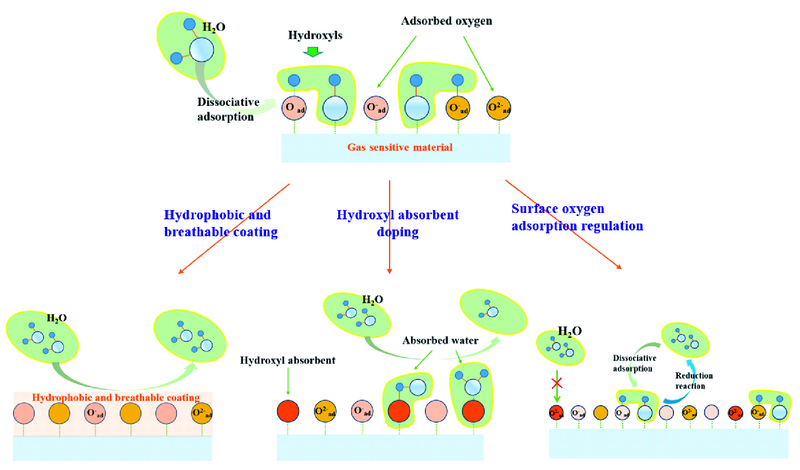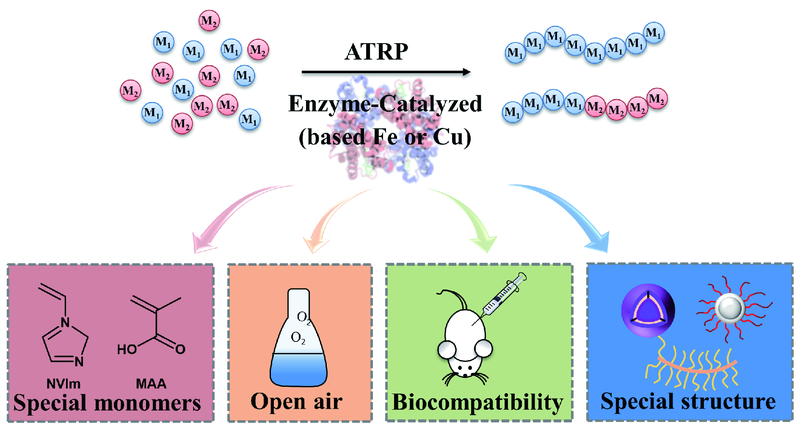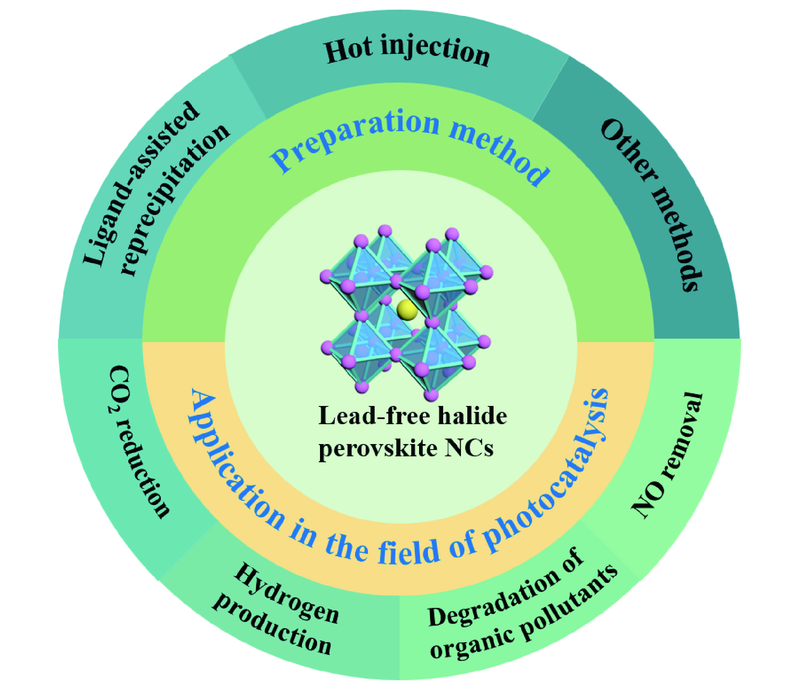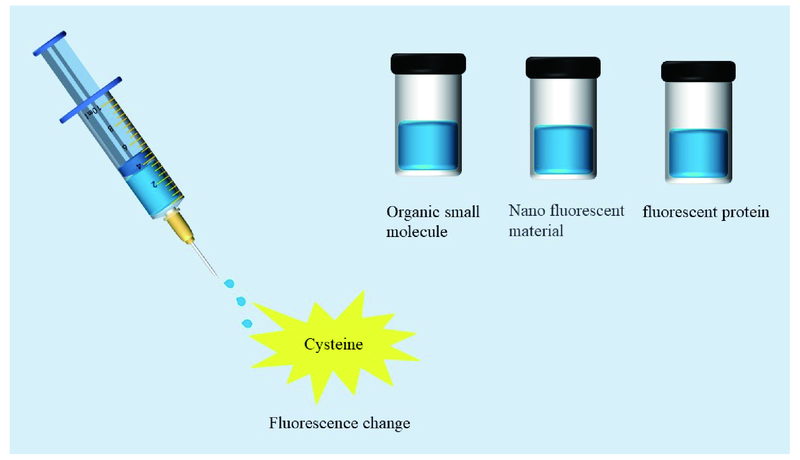Cu-exchanged zeolite SSZ-13 (Cu-SSZ-13) has been proven to be an excellent catalyst for the NH3-SCR of NOx from diesel engine exhaust. This review summarizes the effect of Brønsted acid sites and framework Al atoms on the location and migration of Cu species in CHA cage, emphasizing the importance of paired Brønsted acid sites and ‘strong Al pairs’ in the hydrothermal stability of Cu-SSZ-13. The latest advances in methods to control the formation of framework ‘Al pairs’ is described as well. Based on the analysis of the catalytic performances of Cu-SSZ-13 synthesized with different organic templates, the possibility of synthesizing Cu-SSZ-13 with great catalytic performance and low cost is pointed out.
Contents
1 Introduction
2 Cu-SSZ-13 and selective catalytic reduction (SCR) of NOx
2.1 Property and function of Cu ions in Cu-SSZ-13
2.2 Al distribution in Cu-SSZ-13 and its effect on Cu species
2.3 Possible location of acid sites in Cu-SSZ-13
3 NH3-SCR performance of Cu-SSZ-13 synthesized by different organic structure directing agents
3.1 NH3-SCR performance of Cu-SSZ-13 synthesized by benzyltrimethylammonium hydroxide (BTMAOH)
3.2 NH3-SCR performance of Cu-SSZ-13 synthesized by Cu-tetraethylenepentamine complex (Cu-TEPA)
3.3 NH3-SCR performance of Cu-SSZ-13 synthesized by choline chloride (CC)
3.4 NH3-SCR performance of Cu-SSZ-13 synthesized by Tetraethylammonium hydroxide (TEAOH)
3.5 NH3-SCR performance of Cu-SSZ-13 synthesized by N,N-dimethyl-n-ethyl-cyclohexyl ammonium bromide (DMCHABr)
4 NH3-SCR performance of Cu-SSZ-13 synthesized by co-template method
4.1 NH3-SCR performance of Cu-SSZ-13 synthesized by N, N, N-trimethyl-1-adamantyl ammonium hydroxide (TMADaOH) and Cu-tetraethylenepentamine complex (Cu-TEPA)
4.2 NH3-SCR performance of Cu-SSZ-13 synthesized by tetraethylammonium hydroxide (TEAOH) and Cu-tetraethylenepentamine complex (Cu-TEPA)
4.3 NH3-SCR performance of bimetallic SSZ-13
5 Synthesis of CHA zeolite without organic structure directing agents (SSZ-13 with low Si/Al ratio)
6 Conclusion and outlook





